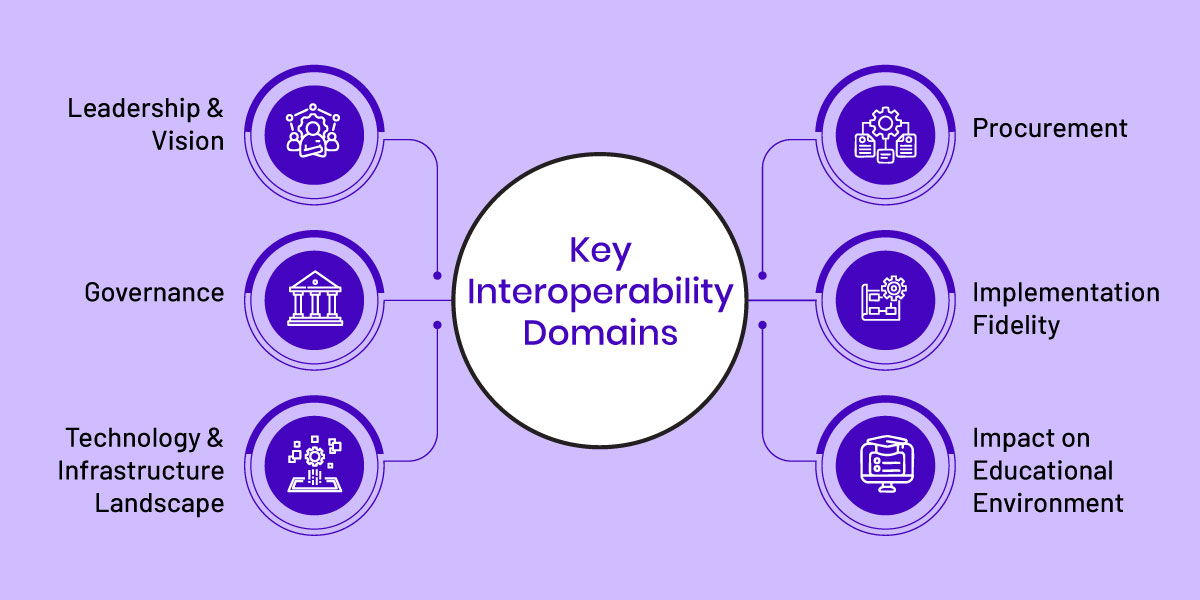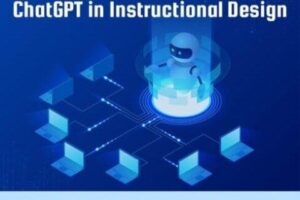
The Hidden Infrastructure of Learning: Why Interoperability in Education Matters
When students log into a classroom app or a teacher assigns content from a digital platform, they are looking for effortless experiences. However, as educational publishers, you know what forms the invisible backbone of digital learning, supporting seamless interactions: a web of integrations, data exchanges, and synchronizations that enable interoperability in education. Achieving this is anything but simple.
This ability of different systems, applications, and content to work in harmony, reliably, and securely is the result of the strategic application of cutting-edge technologies. In the age of instant gratification, K-12 digital learning platforms are evolving at warp speed. Interoperability has become a strategic imperative for K-12 publishers, educators, and edtech providers.
Making EdTech Systems Speak the Same Language
Interoperability in edtech refers to how well various digital tools, learning management systems (LMSs), student information systems (SISs), and content repositories “talk” to each other. It ensures that educational content interoperability enables lessons, grades, and learning progress to flow seamlessly between platforms without manual intervention.
For K-12 publishers, this means their content must be accessible and usable across diverse digital learning platforms. Whether a district uses Canvas, Google Classroom, or Schoology, your content should integrate smoothly, while maintaining both functionality and pedagogical integrity.


The Standards That Power Seamless Learning
Various educational standards have been shaped to facilitate the development of an interconnected learning ecosystem:
LTI Integration (Learning Tools Interoperability)
Developed by 1EdTech (formerly IMS Global), LTI enables seamless embedding of external learning apps into LMSs.
SCORM (Shareable Content Object Reference Model)
SCORM allows standardized packaging and tracking of online learning content.
OneRoster
The standard helps K-12 and higher education publishers automate class rostering and grade syncing between SISs and LMSs, saving administrators hours of manual updates.
QTI (Question and Test Interoperability)
QTI focuses on the exchange of assessment items and results across platforms, ensuring consistent test delivery and scoring.
CASE (Competencies and Academic Standards Exchange)
Enables digital tagging of learning materials to academic standards, helping districts and platforms maintain up-to-date curriculum alignment. This is crucial to securing adoptions year-over-year.
Common Cartridge
This standard streamlines the packaging of complete courses, including content, quizzes, and media, for smooth transfer across LMSs while preserving instructional flow.
Why K-12 Publishers Can’t Afford to Ignore Interoperability
For K-12 publishers, supporting interoperability in education is more than keeping up with tech trends; it’s about securing adoptions, scalability, and relevance in an increasingly competitive space. With districts using diverse platforms, interoperable content reduces the need for custom integrations, shortening the sales cycle and boosting implementation speed.
Interoperability also eases learning analytics. Integrated systems offer greater visibility into students’ progress and insights into their strengths and weaknesses. This empowers educators to personalise instruction, intervene early, and support each learner more effectively. For publishers, it means their content can contribute meaningfully to data-driven teaching without added complexity. This underscores the importance of refining your data practices to fully leverage interoperability in education to enhance academic achievement.
More importantly, interoperability enhances user experiences. Teachers can focus on instruction, rather than troubleshooting. Students access content with fewer login issues and broken links. Parents and stakeholders can effortlessly access the information they need. Real-time syncing improves reporting, such as attendance, progress benchmarking, assignments, etc. Did you know that prioritizing data positions schools and edtechs ahead across the pillars of interoperability? That’s what a Project Unicorn Report affirms about interoperability-ready schools.
Future-Proofing K-12 Content with Interoperability
Let’s recognize interoperability in education for what it is. You are not just future-proofing learning materials but also future-proofing your business through educational content interoperability. By aligning with open standards in education, publishers ensure their digital assets can be easily integrated into current and future K-12 digital learning platforms.
Districts increasingly require compliance with interoperability standards during procurement. Supporting LTI integration and OneRoster APIs opens the doors for bulk adoptions and preferred vendor lists. More importantly, it positions publishers as technology-forward partners in the evolving K-12 edtech landscape. MagicBox’s MagicSync is one tool that performs the dual task of enabling compliance and interoperability in education.
Compatibility Is the New Competitive Edge
Interoperability in education is increasingly a front-liner, driving effective teaching and learning. Forward-thinking K-12 publishers invest in interoperability as a strategic business decision, enhancing usability, reducing support overheads, and increasing reach. They recognize that it is more than a checkbox. As the ecosystem of digital learning platforms expands, education publishers must design for interoperability. Embracing open standards and ensuring educational content interoperability can be the differentiators that drive long-term success in a crowded market.
The future of K-12 learning isn’t just digital. It’s interoperable. MagicBox equips you with the tools to deliver interoperable content that districts trust and adopt faster. Start building smarter with the experts in interoperability in education.
Source link




